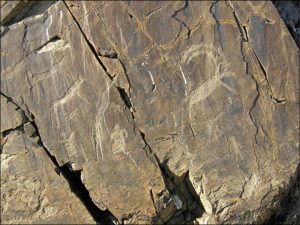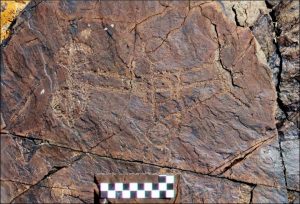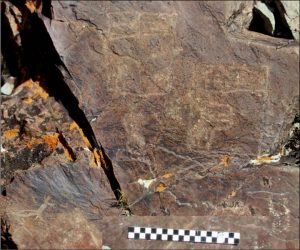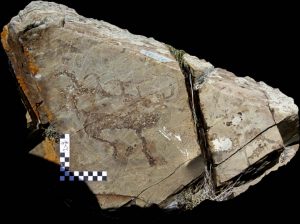Researchers documented a gallery of over 500 petroglyphs at Dus-Dag mountain, Kara-Turug range, on the border between Russia and Mongolia, that are believed to have been made since the Bronze Age until 1st millennium AD.

Archaeologist Marina Kilunovskaya believes that every major civilisation that came across this area added their own distinct imprint to the collection of rockart without destroying the depictions made by preceding civilisations. It is believed that various peoples came to the are for salt which is present in local deposits, leaving etchings depicting their life and beliefs. The researcher identified various phases and civilisations that stand behind the ancient art. The territory is said not to have been studied before as it is hard to reach and located near the border.

Petroglyphs dating back to the Bronze Age present evidence of houses, with homely domestic scenes. It is possible that the ancient nomads knew how to build houses or dwellings which are depicted here. Archaeological discoveries provide evidence that ancient populations pre-dating the Scythians built log structures for burial chambers but it seems to the researcher that the drawings depict real houses in which Bronze Age families actually lived. These are regular houses with roofs, although common belief is that nomads lived in yurts. These images of houses are considered now as unique.


A unique monument of rock art was also discovered at Kara-Turug, which has 20 groups of petroglyphs. The earliest are dated to the Bronze Age, when the first wave of migration to Central Asia, Mongolia, and the Sayano-Altai highlands occurred and Indo-European population of cattle breeders came to the region. They are believed to have left depictions of animals, mainly bulls, horned faces and images of carts or chariots. A bit younger are etchings interpreted as left by the Scythians with the main, repeating motif of a deer. It is considered as very characteristic for the Scythian art. Some of the art attributed to them show also hunting scenes. The next layer are drawn by the Turks. They loved to draw their warriors – in armour, with banners.

The researchers believes that the one image depicted in all the epochs is a mountain goat or sheep. All the past communities that were involved in creation of the gallery hunted this animal and it is present in their drawings. As to the techniques used it seems that in the Bronze Age sharpened bones and stones were used, later iron, and finally charcoal during Scythian times.


(after The Siberian Times & Marina Kilunovskaya)